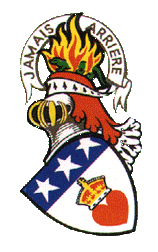   |
|
|
|
|
| ||||||
The Covenanting Wars - 'The Killing Time'
The Church had remained through most of the Middle Ages the central
focus of people’s lives. Not only promoting the Christian faith, it
also supported the poor and punished wrongdoers. By the start of the
fifteenth century however it had become corrupt, taking bribes to
cover up misdeeds or to confer powerful ecclesiastical positions
upon members of already powerful families. These abuses deepened
until Martin Luther, a German Augustinian monk, nailed a ‘Protest’
to the church door in Wittenberg in 1517. This was the start of the
Protestant movement which rapidly spread across Europe and would in
1560 be declared the official religion of Scotland. Its main aims
were to return the Church to its core values, to distance it from
the greed and degradation that it had become known for and to allow
ordinary people to read the Bible and attend services in their own
language rather than in Latin. Within Scotland there was still
tremendous resistance from some quarters towards the new religion.
People started taking sides; Mary of Guise, the Scottish regent,
along with her supporters were Catholic and still held true to the
‘Auld Alliance’ and looked towards France for support. The
Protestants reluctantly tried to counter this by allying themselves
with Scotland’s ‘Auld Enemy’ – England - and seeking the support of
Henry VIII who had no love for the Pope.
The Scottish Covenanters, in 1643, also signed the ‘Solemn League and Covenant’, promising to send an army into England to aid the Parliamentary forces against the King. The Parliament, for their part in the bargain, promised to establish the Presbyterian Church, not only in Scotland, but throughout England and Ireland as well. It was the Scottish army which Charles I surrendered to and which was ultimately responsible for handing him over to Cromwell, who had him executed. Cromwell’s Parliament did not keep their promise to the Covenanters, who were later to defy him by restoring the late King’s heir, Charles II, to the throne.
A tombstone of John Bell of Whiteside in Anwoth Churchyard reads: This monument shall tell posterity
That blessed bell of Whiteside here doth ly Who at command of bloody Lagg was shot A murder strange, which should not forgot Douglas of Morton did him quarters give Yet cruel Lagg would not let him survive This martyr sought some time to recommend His soul to God before his days did end The tyrannt said: 'What deveil! Ye've pray'd eneuch These seven long years, on mountain and in cleuch There is also a monument in Old Dailly (near Girvan) Churchyard:
Here lies The corpse of John Semple who was Shot at Kilerran at Command of Cornet James Douglas (1) The stone for the Caldon Martyrs, six men caught at a prayer meeting and executed on the spot in 1685, was vandalised in 1983 but thankfully the broken stone was taken to the Newton Stewart Museum for safe keeping. This reversed image shows the inscription on the reverse which reads
The following are recorded as 'Covenanter martyrs': John Douglas, Drowned near Orkney in shipwrecked slave ship, 1679 Samuel Douglas, Drowned near Orkney in shipwrecked slave ship, 1679, , , Transported: Charles Douglas, possibly from the Dumfries area, and William Douglas, possibly of Bridge of Ken, were both transported to New Jersey on the Henry & Francis having been held prisoner in Dunottar Castle. Prisons: Covenanters were held in many places throughout Scotland, including • The Bass Rock • Blackness Castle • Dunottar Castle • St Giles High Church, Edinburgh • Greyfriars Kirkyard, Edinburgh • Kirkcudbright Tolbooth
Notes: 1. Probably William of Morton's son, who went on the become a Colonel of the Scots Footguards, and then a Brigadier in the Dutch Highland Brigade 1709. Fought at Malplaquet, and elsewhere. He may have been involved in the Battle of the Boyne on the side of William of Orange. He owned the Lordship of Knochsting as well as other properties. 2. The officer who was said to be involved in the most deaths was one Colonel James Douglas, the brother of the Duke of Queensberry, who, only a few years later, was a Lieutenant-General for William of Orange at the Battle of the Boyne.
Any contributions to this item will be gratefully accepted
| ||||||||||||||||||||||||||||||||
|
The content of this website is a collection of materials gathered from a variety of sources, some of it unedited. The webmaster does not intend to claim authorship, but gives credit to the originators for their work. As work progresses, some of the content may be re-written and presented in a unique format, to which we would then be able to claim ownership. Discussion and contributions from those more knowledgeable is welcome. Last modified: Friday, 17 May 2024 |